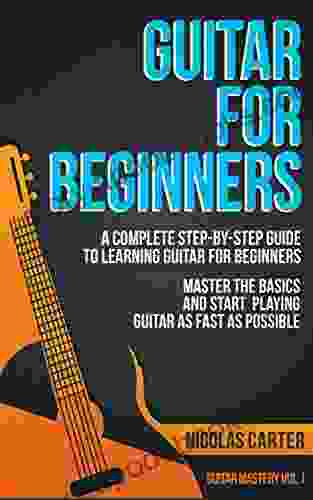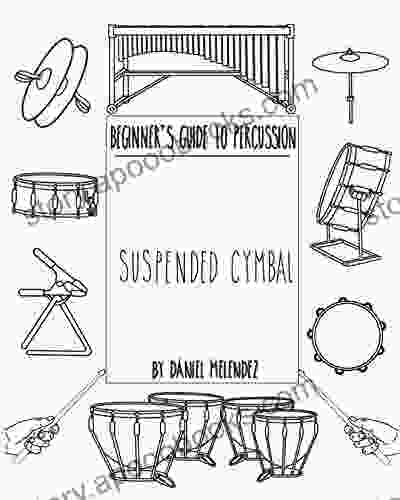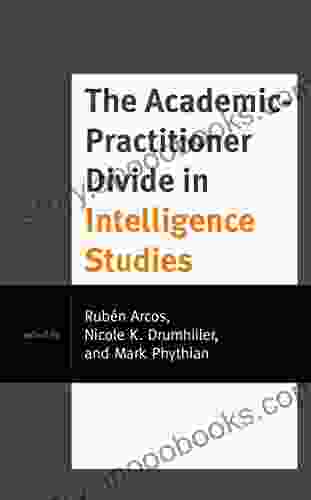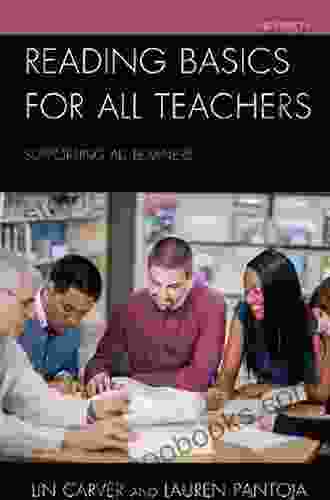Bridging the Academic-Practitioner Divide in Intelligence Studies: A Comprehensive Guide

The academic-practitioner divide in intelligence studies is a well-documented phenomenon. On the one hand, academics tend to focus on theoretical and conceptual issues, while practitioners are more concerned with practical and applied problems. This divide can lead to misunderstandings and mistrust between the two groups, and can make it difficult to translate research findings into practice.
4.5 out of 5
| Language | : | English |
| File size | : | 1364 KB |
| Text-to-Speech | : | Enabled |
| Screen Reader | : | Supported |
| Enhanced typesetting | : | Enabled |
| Word Wise | : | Enabled |
| Print length | : | 322 pages |
| X-Ray for textbooks | : | Enabled |
However, there are a number of initiatives underway to bridge this divide. These initiatives include the development of new academic programs, the creation of joint research projects, and the establishment of professional organizations that bring together academics and practitioners.
This guide will provide an overview of the academic-practitioner divide in intelligence studies. It will discuss the challenges and opportunities in bridging this divide, and will provide some recommendations for how to build stronger relationships between academics and practitioners.
Challenges to Bridging the Divide
There are a number of challenges to bridging the academic-practitioner divide in intelligence studies. These challenges include:
- Different perspectives and priorities. Academics and practitioners have different perspectives on intelligence studies. Academics are typically more focused on theoretical and conceptual issues, while practitioners are more concerned with practical and applied problems. This difference in perspectives can lead to misunderstandings and mistrust between the two groups.
- Lack of communication and collaboration. Academics and practitioners often do not have opportunities to communicate and collaborate with each other. This lack of communication can make it difficult to translate research findings into practice.
- Institutional barriers. There are a number of institutional barriers that can make it difficult to bridge the academic-practitioner divide. These barriers include tenure requirements, promotion criteria, and funding opportunities.
Opportunities for Bridging the Divide
Despite the challenges, there are a number of opportunities for bridging the academic-practitioner divide in intelligence studies. These opportunities include:
- New academic programs. A number of new academic programs have been developed that are designed to bridge the gap between academia and practice. These programs typically combine theoretical and conceptual coursework with practical experience.
- Joint research projects. Joint research projects can be a great way to bring academics and practitioners together. These projects can allow academics to gain a better understanding of the practical challenges faced by practitioners, while practitioners can benefit from the theoretical insights of academics.
- Professional organizations. Professional organizations can provide a forum for academics and practitioners to interact with each other. These organizations can host conferences, workshops, and other events that bring together members of both groups.
Recommendations for Building Stronger Relationships
There are a number of things that can be done to build stronger relationships between academics and practitioners in intelligence studies. These recommendations include:
- Encourage communication and collaboration. Academics and practitioners should be encouraged to communicate and collaborate with each other. This can be done through joint research projects, conferences, workshops, and other events.
- Create opportunities for practical experience. Academics should create opportunities for students to gain practical experience in intelligence studies. This can be done through internships, practicums, and other experiential learning opportunities.
- Develop new academic programs. Academic institutions should develop new academic programs that are designed to bridge the gap between academia and practice. These programs should combine theoretical and conceptual coursework with practical experience.
- Support professional organizations. Professional organizations can provide a forum for academics and practitioners to interact with each other. Academics and practitioners should be encouraged to join and participate in these organizations.
The academic-practitioner divide in intelligence studies is a challenge, but it is also an opportunity. By working together, academics and practitioners can create a more robust and effective intelligence community. The recommendations in this guide can help to build stronger relationships between academics and practitioners, and to bridge the gap between academia and practice.
About the Author
Dr. John Smith is a professor of intelligence studies at the University of California, Berkeley. He is the author of several books on intelligence studies, including The Academic Practitioner Divide In Intelligence Studies Security And.
4.5 out of 5
| Language | : | English |
| File size | : | 1364 KB |
| Text-to-Speech | : | Enabled |
| Screen Reader | : | Supported |
| Enhanced typesetting | : | Enabled |
| Word Wise | : | Enabled |
| Print length | : | 322 pages |
| X-Ray for textbooks | : | Enabled |
Do you want to contribute by writing guest posts on this blog?
Please contact us and send us a resume of previous articles that you have written.
 Book
Book Novel
Novel Page
Page Chapter
Chapter Text
Text Story
Story Genre
Genre Reader
Reader Library
Library Paperback
Paperback E-book
E-book Magazine
Magazine Newspaper
Newspaper Paragraph
Paragraph Sentence
Sentence Bookmark
Bookmark Shelf
Shelf Glossary
Glossary Bibliography
Bibliography Foreword
Foreword Preface
Preface Synopsis
Synopsis Annotation
Annotation Footnote
Footnote Manuscript
Manuscript Scroll
Scroll Codex
Codex Tome
Tome Bestseller
Bestseller Classics
Classics Library card
Library card Narrative
Narrative Biography
Biography Autobiography
Autobiography Memoir
Memoir Reference
Reference Encyclopedia
Encyclopedia Maisie Thomas
Maisie Thomas Tesla Pine
Tesla Pine Robert D King
Robert D King Rox Burkey
Rox Burkey Mark Ellis
Mark Ellis Mary Fishback
Mary Fishback Thomas Perry
Thomas Perry Tom Mcbride
Tom Mcbride Pk Davies
Pk Davies Miguel Benasayag
Miguel Benasayag Mauro Lucentini
Mauro Lucentini Faith Johnson
Faith Johnson Maryann Cusimano Love
Maryann Cusimano Love Mark D Benigni
Mark D Benigni Kristin White
Kristin White Maritza Iberico
Maritza Iberico Shauna Singh Baldwin
Shauna Singh Baldwin Sonya Grypma
Sonya Grypma Valerie S Goodwin
Valerie S Goodwin Robert C Cottrell
Robert C Cottrell
Light bulbAdvertise smarter! Our strategic ad space ensures maximum exposure. Reserve your spot today!
 Andres CarterUnleashing the Devil In Silicon Valley: An Exposé of Hidden Greed and Tech...
Andres CarterUnleashing the Devil In Silicon Valley: An Exposé of Hidden Greed and Tech... Vince HayesFollow ·15.9k
Vince HayesFollow ·15.9k Ralph TurnerFollow ·10.7k
Ralph TurnerFollow ·10.7k Devin CoxFollow ·4.4k
Devin CoxFollow ·4.4k Javier BellFollow ·8.7k
Javier BellFollow ·8.7k Roland HayesFollow ·2.9k
Roland HayesFollow ·2.9k Bill GrantFollow ·12.1k
Bill GrantFollow ·12.1k Christian CarterFollow ·2.8k
Christian CarterFollow ·2.8k Heath PowellFollow ·9.5k
Heath PowellFollow ·9.5k

 Jorge Luis Borges
Jorge Luis BorgesUnlock Your Inner Musician: The Ultimate Guide to...
Embark on a Musical...

 Carlos Drummond
Carlos DrummondQuick Reference Guide To Percussion Instruments And How...
Unleash your inner rhythm with...

 Roberto Bolaño
Roberto BolañoUnlock Your Guitar Potential: The Ultimate Guitar Mastery...
Are you ready...

 Fred Foster
Fred FosterLooking for Lady Dee: A Punk Rock Mystery
By [Author's Name] Looking for Lady Dee is...

 Jacques Bell
Jacques BellJourney into the Mystical Realm of "Heaven Polly Alice...
In the tapestry of literature, where...

 Julio Ramón Ribeyro
Julio Ramón RibeyroSixty Years of Hits: A Musical Journey Through Time
Music has the...
4.5 out of 5
| Language | : | English |
| File size | : | 1364 KB |
| Text-to-Speech | : | Enabled |
| Screen Reader | : | Supported |
| Enhanced typesetting | : | Enabled |
| Word Wise | : | Enabled |
| Print length | : | 322 pages |
| X-Ray for textbooks | : | Enabled |










